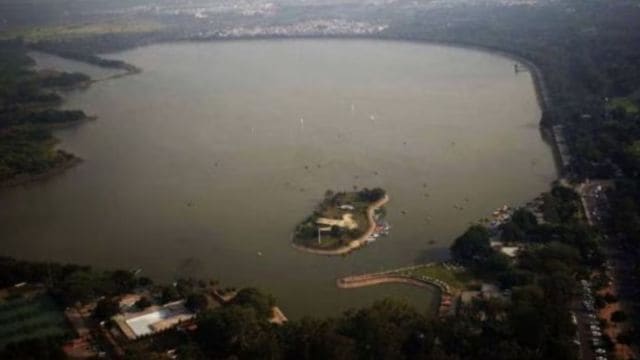Chandigarh administration closes Sukhna floodgate 17 hours after opening it
According to officials, the floodgate was opened approximately at 11 pm on August 29 and was closed around 4 pm on Saturday after the water level receded to 1,162.30 feet
 In August, the floodgates had been opened seven times — August 29, 19, 17, 15, 8, and 6 (File Photo)
In August, the floodgates had been opened seven times — August 29, 19, 17, 15, 8, and 6 (File Photo)The Chandigarh Administration on Saturday evening closed the last-opened floodgate of the Sukhna Lake nearly 17 hours after opening it.
According to officials, the floodgate was opened approximately at 11 pm on August 29 and was closed around 4 pm on Saturday after the water level receded to 1,162.30 feet. The released water is directed into the Ghaggar River through the Sukhna Choe. This floodgate operation is part of ongoing efforts to manage the lake’s water levels following recent heavy rains.
In August, the floodgates had been opened seven times — August 29, 19, 17, 15, 8, and 6. In comparison, the floodgates were opened four times in 2023, six times in 2022, and five times in 2021. Notably, the opening of two floodgates in August 2020 led to widespread flooding in low-lying areas of Zirakpur situated alongside the Sukhna Choe.
Meanwhile, to ensure efficient management of the situation, the UT Engineering Department has stationed officials on a 24×7 basis at the regulator end of the lake.
In addition, CCTV cameras have been installed to monitor the water levels consistently. A dedicated control room has also been set up to coordinate with the district administrations of Chandigarh, Mohali, and Panchkula to streamline communication and response during the floodgate operations.
In light of the recent heavy rainfall, Chief Engineer C B Ojha, along with officers from the Engineering Department, visited several key areas, including Sukhna Choe, Kishangarh, Manimajra, Bapu Dham, Raipur Kalan, and Sukhna Lake. The visit was intended to assess any potential damage caused by the rains.
Despite the significant rainfall and the opening of the floodgates, no major damage has been reported in the affected areas, an official said. However, some minor damage was noted in a few locations, and repair work is already underway to address the issues swiftly.
The Chief Engineer and other officers also visited the 24×7 control room at Sukhna Lake, which monitors the water levels and ensures coordination between the states of Punjab and Haryana to avoid any flood-like situations in the event of further water releases.







